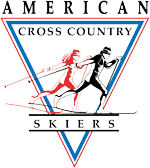Resources for
Join AXCS
The following is an original ski education outline developed by XC Oregon Coach/Director and AXCS National Director J.D. Downing. For use exclusively for AXCS media, links welcome, republishing by permission only, all rights reserved.
I. BE ORGANIZED
A. Have a basic written outline for any organized practice -- share or post it when possible ahead of time.
B. Have a rough plan of where, when, how long, how hard/easy, etc. with every session. You'll make changes, but it's not wise to "just wing it" every session.
C. Be prepared for last minute adjustments (weather, etc.), but good preparation should allow you to stick with your plan.
D. Treat every second of session time like gold. If you are on point, your skiers will pick up on that vibe also.
II. KNOW YOUR AUDIENCE
A. Take into account abilities, goals, fitness/technical levels, equipment.
B. Communicate with individuals and groups. Understand the different needs of different ages and sub-groups. Ask questions; listen; pay attention; encourage feedback.
III. TEACHING NEW SKILLS
A. Introduce using clear, simple language; demonstrate slowly.
B. Have group try skill; provide brief (encouraging) feedback; re-introduce; re-demo; them try again several times.
C. Always start and end with fundamentals. Limit focus to 1-3 key points.
D. Summarize and prepare for skiing on own.
IV. REINFORCING AND DEVELOPING SKILLS
A. Methods
1. Skiing without poles or with one pole only in easy terrain
2. Skiing very slowly (heart rate at level 1 or lower) with or without poles emphasizing complete motions.
3. Repetition drills in easy terrain. Keep drill sessions to 10-30 minutes.
4. Modeling behind superior skiers--slowly, in easy terrain.
5. Mental focus on 1-3 points in any given session.
6. Concentrating on good technique while practicing.
7. Skiing in different situations--classic without tracks, skating on crust, skiing in tough grooming or non-groomed situations.
8. Working on technique year-round.
B. Feedback Techniques
1. Video--limited footage of subjects, always compare to elite footage.
2. Coaches Evaluation--careful what you say or don’t say; start and end positive.
3. Educate everyone as to the value of different coaching techniques or different ways to get skiers to the same point.
V. OFF-SEASON TECHNIQUE DEVELOPMENT
A. Methods
-Skiing (as much as possible year-round)
-Rollerskiing (not for everyone, know your audience)
-Skiwalking/Foot imitation drills
-Hill bounding/plyometrics (with or without poles)
-Running with poles (varied terrain, trails primarily)
-Circuit Strength, Balance, Coordination Drills
